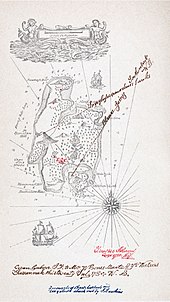Describing his wife, Queen Disa (Duchess of Payn, of Great Payn and Mone), Kinbote (in VN’s novel Pale Fire, 1962, Shade’s mad commentator who imagines that he is Charles the Beloved, the last self-exiled king of Zembla) quotes a Zemblan saying belwif ivurkumpf wid spew ebanumf ("A beautiful woman should be like a compass rose of ivory with four parts of ebony”):
Since her final departure from Zembla he had visited her twice, the last time two years before; and during that lapse of time her pale-skin, dark-hair beauty had acquired a new, mature and melancholy glow. In Zembla, where most females are freckled blondes, we have the saying: belwif ivurkumpf wid spew ebanumf, "A beautiful woman should be like a compass rose of ivory with four parts of ebony." And this was the trim scheme nature had followed in Disa's case. There was something else, something I was to realize only when I read Pale Fire, or rather reread it after the first bitter hot mist of disappointment had cleared before my eyes. I am thinking of lines 261-267 in which Shade describes his wife. At the moment of his painting that poetical portrait, the sitter was twice the age of Queen Disa. I do not wish to be vulgar in dealing with these delicate matters but the fact remains that sixty-year-old Shade is lending here a well-conserved coeval the ethereal and eternal aspect she retains, or should retain, in his kind noble heart. Now the curious thing about it is that Disa at thirty, when last seen in September 1958, bore a singular resemblance not, of course, to Mrs. Shade as she was when I met her, but to the idealized and stylized picture painted by the poet in those lines of Pale Fire. Actually it was idealized and stylized only in regard to the older woman; in regard to Queen Disa, as she was that afternoon on that blue terrace, it represented a plain unretouched likeness. I trust the reader appreciates the strangeness of this, because if he does not, there is no sense in writing poems, or notes to poems, or anything at all. (note to Lines 433-434)
There is a compass rose on R. L. Stevenson's map of Treasue Island:

I managed to make out the name J. Hawkins at the end of the inscription at the bottom of the map (Jim Hawkins is the main character and narrator in Treasure Island). Kinbote's plan of the Onhava Palace that he drew for Shade is signed with a black chess-king crown after "Kinbote." R. L. Stevenson's novel Treasure Island (1882-83) and his story The Raja's Diamond (1878) bring to mind the Zemblan crown jewels.
Describing Fleur de Fyler (Contess de Fyler's daughter who becomes the favorite lady-in-waiting of Queen Disa), Kinbote mentions Zemblan anatomy:
It was warm in the evening sun. She wore on the second day of their ridiculous cohabitation nothing except a kind of buttonless and sleeveless pajama top. The sight of her four bare limbs and three mousepits (Zemblan anatomy) irritated him, and while pacing about and pondering his coronation speech, he would toss towards her, without looking, her shorts or a terrycloth robe. Sometimes, upon returning to the comfortable old chair he would find her in it contemplating sorrowfully the picture of a bogtur (ancient warrior) in the history book. He would sweep her out of his chair, his eyes still on his writing pad, and stretching herself she would move over to the window seat and its dusty sunbeam; but after a while she tried to cuddle up to him, and he had to push away her burrowing dark curly head with one hand while writing with the other or detach one by one her little pink claws from his sleeve or sash. (note to Line 80)
Zemblan anatomy makes one think of the dissecting room in Dr Jekyll's house in R. L. Stevenson's Strange Case of Dr. Jekyll and Mr Hyde (1886).
